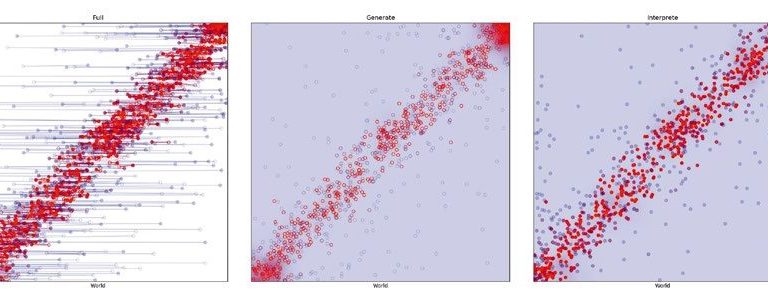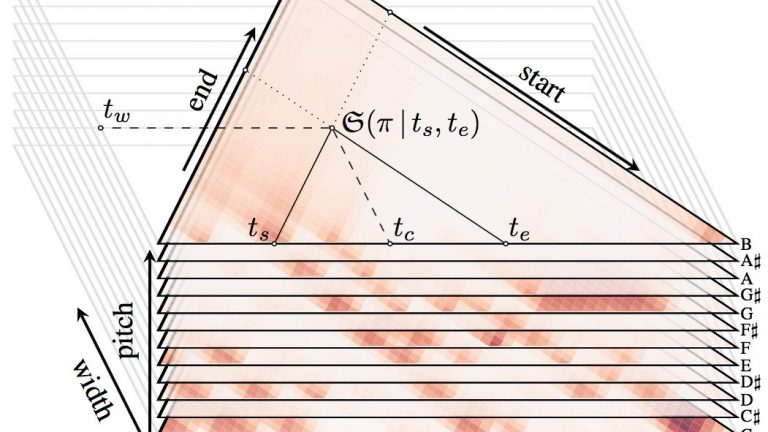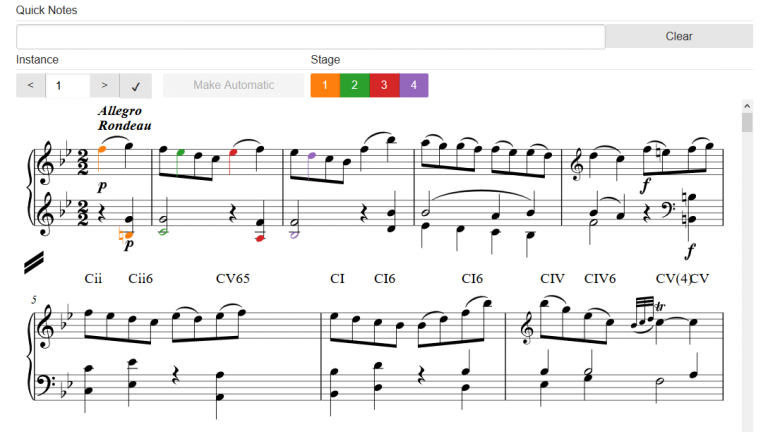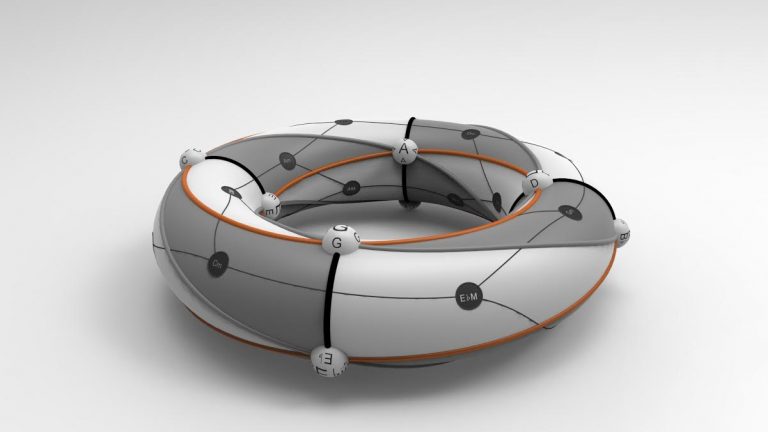
Evolution of communication and music
Music evolved as a participative and interactive social practice. This is why we can observe certain universal properties that are shared between music of different cultures and even between music and spoken language. Tolearn more about these fundamental principles that govern communication, we perform simulations of strongly simplified scenarios. For instance, we assume two agents (…)

Data-driven hierarchical visualizations of music
Pitch scapes represent the musical content of different sections of a piece, concretely, how often a specific pitch class occurred in a section. Points at the bottom of the scape plot represent very short sections at that specific location; higher points represent larger sections; the top summarises the entire piece. Pitch scapes can be visualised (…)

Techniques for identifying musical patterns
Voice-leading schemata are common note patterns that can be found in various musical styles ranging from Renaissance, Baroque and Classical to modern Popular and Jazz music. A notorious difficulty when dealing with patterns in music is the highly irregular, multidimensional structure of music as opposed to, for example, text. In particular, finding these patterns when (…)

The DCML Blog
In this part of our site, we intend to showcase some of the scientific highlights, fun ideas, tools, pieces, musical corpora that we are or have been working on at the DCML. Some of these have been presented in journals or at conferences, some are part of new research, and some are simply interesting things (…)
Start Page Post
Mission Statement Music is a ubiquitous phenomenon across cultures around the world. Why does music play such an important role in human life? What are the underlying cognitive structures? How did they evolve? What are the musical features and processes shared between various genres, historical styles, and cultures? How did musical universals emerge? How can (…)